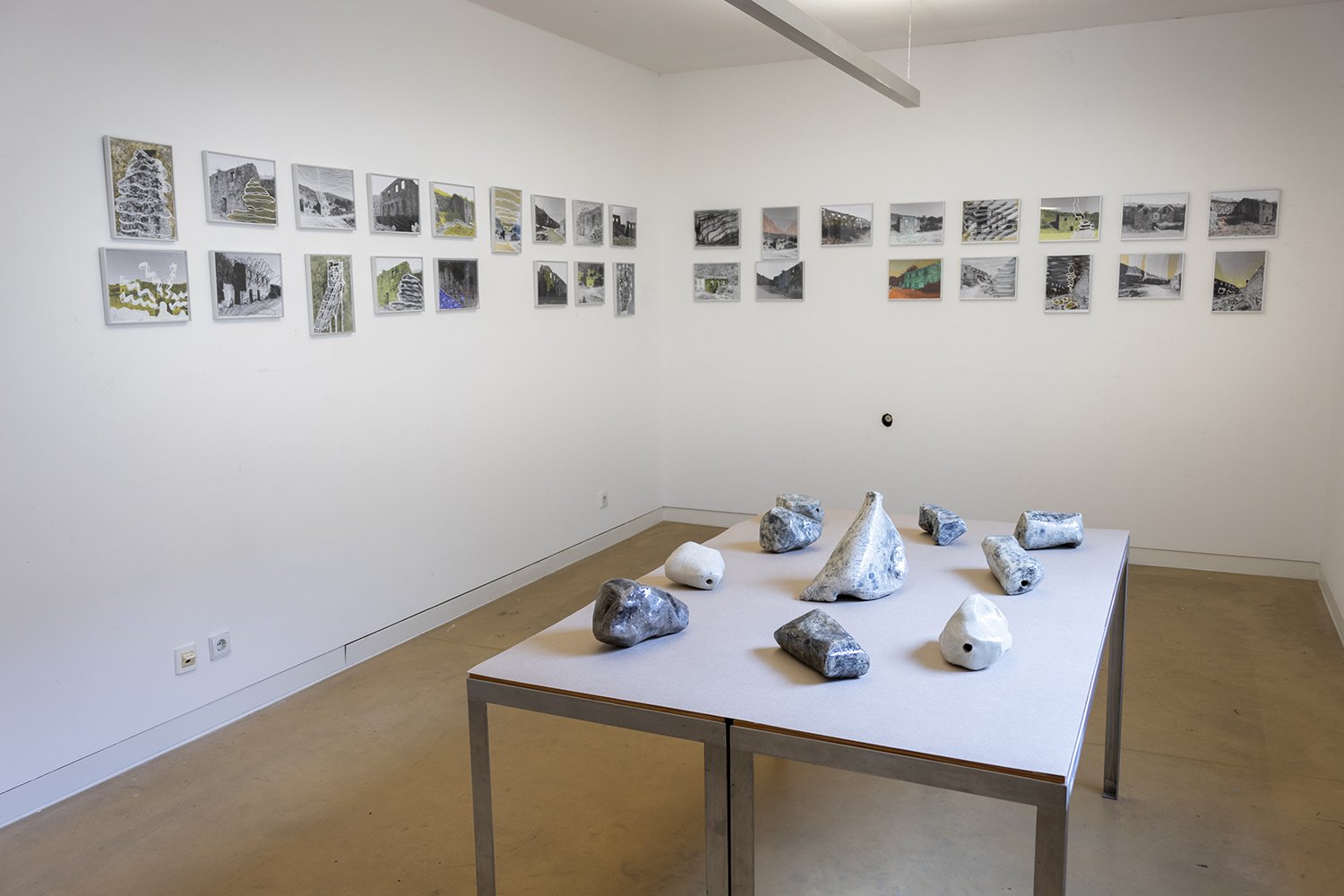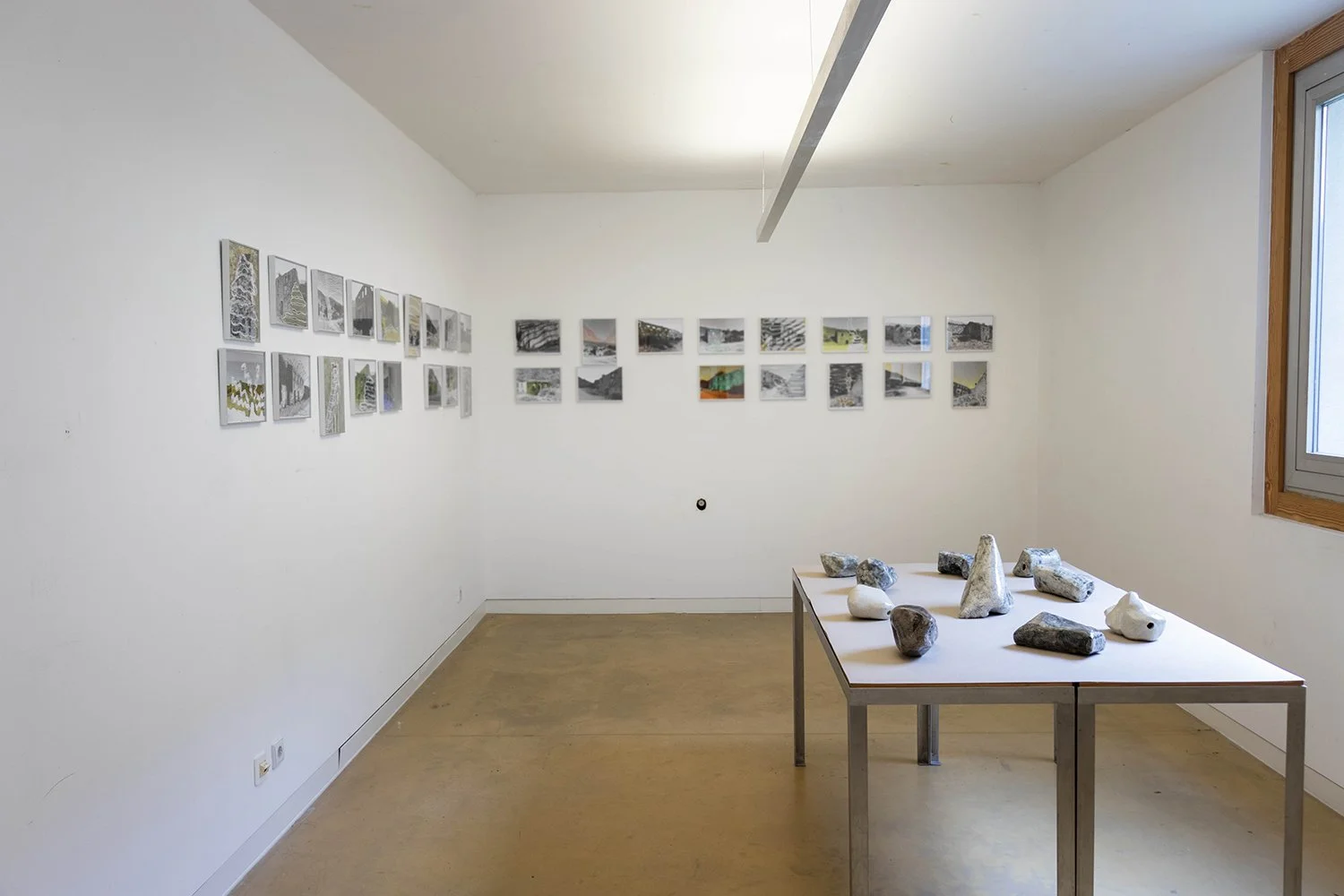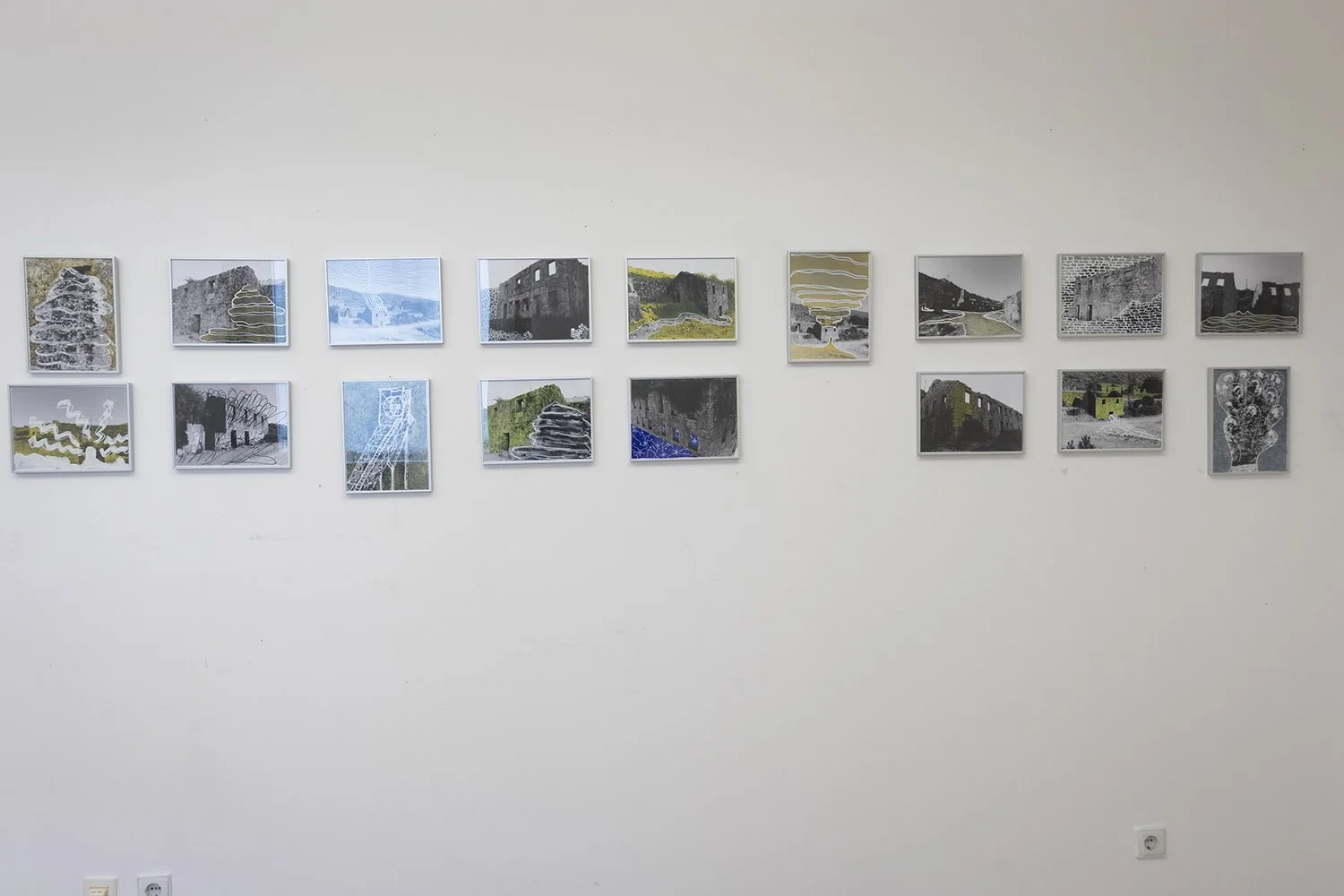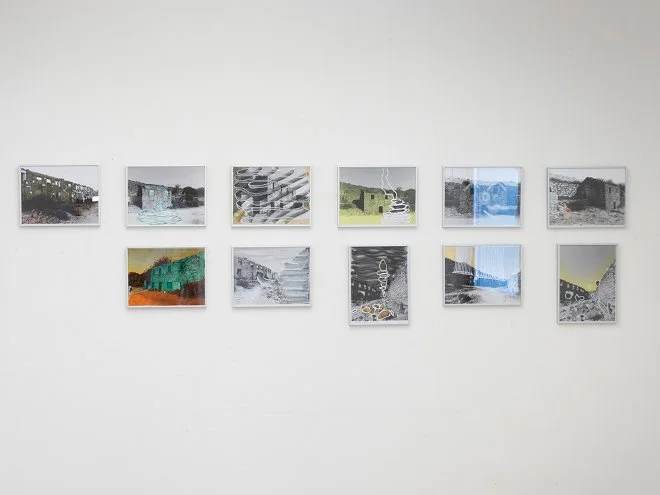
Inerte
Exposição com Claudia Lopes
Estúdio UM - Guimarães
INERT
Exhibition with Claudia Lopes
Estúdio UM - Guimarães
Do silêncio da montanha...
“Andando, andando, chegou a um dédalo de caminhos, por um dos quais rolavam vagonetas, por outros ia e vinha o pessoal particular dos engenheiros e agentes técnicos, com as vivendas muito senhoris e claras à retaguarda de pequenas platibandas enfeitadas de pelargónios e eloendros. E, passos adiante, ao salvar a corcova do terreno, descobriu-se o formigueiro humano a seus olhos admirados, repartido em turmas consoante a natureza das tarefas, desprendendo uma barulheira a que era como abóbada o zunzum infernal dos volantes que se não viam. Até bem longe, quinhentos a mil metros, se via gente, mulheres que lavavam a terra mineralizada ao ar livre e debaixo de telheiros, braços arremangados, pés descalços, sai colhida entre os joelhos para a água não esperrinchar pelas pernas acima. Rapazotes, com boinas de homem, sem cor à força de usadas, a carne tenra a espreitar das camisas cheias de surro e em frangalhos, vinham baldear no monte o carrinho atestado de calhaus em que coruscavam com o sol as pirites e palhetas e volframina. Mais ao largo, grande caterva de homens abria uma trincheira, e outra, para o morro, levava um banco de pedra e saibro à ponta de ferro e picareta. Aqui e além trabalhadores borcavam a rocha, enquanto a outros incumbia carregar os tiros de pólvora bombardeira. Crispados às varas dos sarilhos, muitos extraíam o resulho dos poços ou enxugavam-lhes a água para o trabalho prosseguir eficazmente. Era subterrânea, por vezes a dezenas de metros de profundidade, que se exercia a actividade capital da mina, com revólveres de ar comprimido a demolir o quartzo, piquetes de entivadores especializados a escorar as galerias, bombas elétricas e manuais a sorver a água dos regueirões, escombreiros, mineiros de guilho e marreta, homens e mais homens à carga e à descarga – pessoal complexo, testo e sabido na manobra. À superfície era como um arraial. Por cima dos gritos, comandos, falas desencontradas, do retinir das ferramentas e estreloiçar das vagonas e raposas, o dínamo pulsava e a sua pancada mate e ensurdecedora criava este tónus especial, semibárbaro e feroz, da indústria moderna, homem e máquina conjugados.”
Aquilino Ribeiro, 1943, Volfrâmio, Lisboa: Bertrand, pp.69-71.
Agora tudo é inerte, na escombreira só se ouve o vento.
From the silence of the mountain...
"Walking and walking he came to a labyrinth of paths, along one of which wagons rolled, and along others the private staff of engineers and technical agents came and went, with their very stately, neat homes to the rear of small plazas adorned with pelargoniums and oleanders. And, steps ahead, as he saved the hump of the land, his astonished eyes discovered the human anthill, divided into groups according to the nature of the tasks, making a racket that was vaulted by the infernal buzzing of the unseen flywheels. Even far away, five hundred to a thousand metres, people could be seen, women washing the mineralized earth in the open air and under tiled roofs, arms outstretched, bare feet, skirts stuck between their knees so that the water wouldn't splash up their legs. Boys, with men's berets, colourless by force of use, the tender flesh peeking out of their shirts, ruffled and in tatters, came to the hill to bucket the cart full of pebbles in which they coruscated pyrites and reeds and wolframine with the sun. Further out, a great crowd opened a trench, and another crowd, towards the hill, carried a bank of stone and gravel to the point of iron and pickaxe. Here and there workers dug the rock, while others carried the shots of gunpowder bombardment. Many extracted the slurry from the wells or flushed the water out of them so that the work could continue efficiently. It was underground, sometimes dozens of metres deep, that the main activity of the mine was carried out, with compressed-air guns to demolish the quartz, pickets of specialised entivators to shore up the galleries, electric and manual pumps to suck the water from the gulleys, waste heaps, miners with winches and sledgehammers, men and more men loading and unloading -complex personnel, skilled and experienced in manoeuvres. On the surface it was like a camp. Above the shouts, commands, mumbled conversations, the clanging of tools and the clatter of wagons and foxes, the dynamo pulsed and its matte and deafening bang created this special tone, semi-barbaric and fierce, of modern industry, man and machine combined.”
Aquilino Ribeiro, 1943, Volphramio, Lisbon: Bertrand, pp.69-71.
Now everything is inert, in the waste heap only the wind can be heard.



